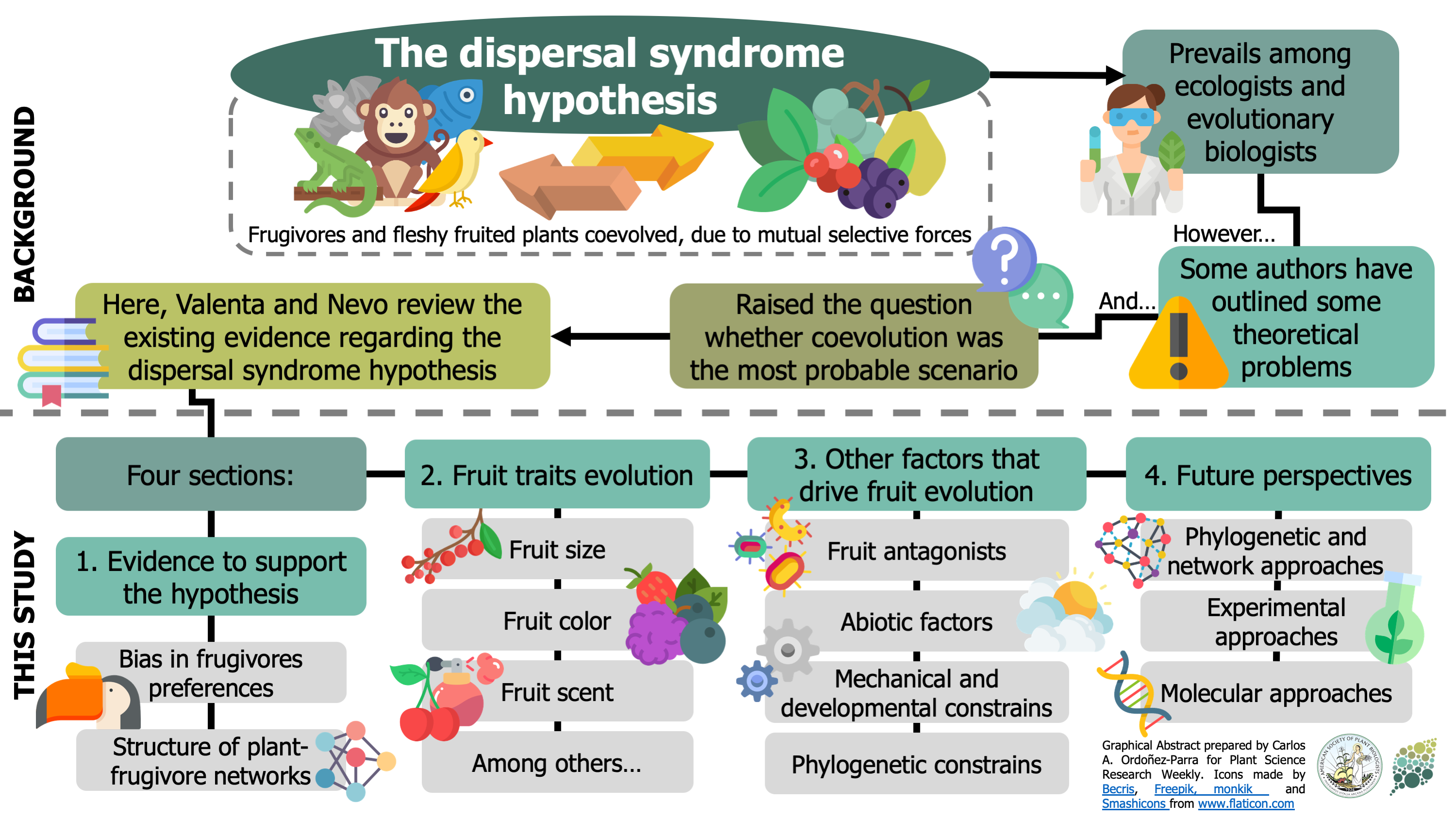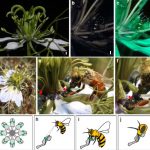How animals shaped fruit traits, and how they did not (Funct. Ecol.)
 The dispersal syndrome hypothesis states that frugivores and fleshy-fruited plants coevolve by exerting selective pressures on each other. Even though this idea still prevails, some theoretical issues could make this scenario improbable. As a result, a new chicken-or-egg dilemma appeared: are the frugivores responsible for fruit evolution, or is it the opposite? In this fascinating review, Valenta & Nevo bring together evidence that either supports or conflicts with the dispersal syndrome hypothesis. First, the authors introduce the evidence confirming it, such as the bias of frugivores when selecting fruits and the non-random structure of plant-frugivore networks. For instance, they show how fruit size, color, and scent, among other traits, have been subject to frugivores’ selection. However, the authors also present other factors that could have influenced fleshy fruits evolution besides frugivores, showing this dilemma has more protagonists. In the end, the review –an obligate reading for those interested in plant-frugivore interactions– describes how future studies could contribute to the effort of revealing “the forces driving the tremendous diversity of fruit traits” (Summary by Carlos A. Ordóñez-Parra @caordonezparra) Funct. Ecol. 10.1111/1365-2435.13564
The dispersal syndrome hypothesis states that frugivores and fleshy-fruited plants coevolve by exerting selective pressures on each other. Even though this idea still prevails, some theoretical issues could make this scenario improbable. As a result, a new chicken-or-egg dilemma appeared: are the frugivores responsible for fruit evolution, or is it the opposite? In this fascinating review, Valenta & Nevo bring together evidence that either supports or conflicts with the dispersal syndrome hypothesis. First, the authors introduce the evidence confirming it, such as the bias of frugivores when selecting fruits and the non-random structure of plant-frugivore networks. For instance, they show how fruit size, color, and scent, among other traits, have been subject to frugivores’ selection. However, the authors also present other factors that could have influenced fleshy fruits evolution besides frugivores, showing this dilemma has more protagonists. In the end, the review –an obligate reading for those interested in plant-frugivore interactions– describes how future studies could contribute to the effort of revealing “the forces driving the tremendous diversity of fruit traits” (Summary by Carlos A. Ordóñez-Parra @caordonezparra) Funct. Ecol. 10.1111/1365-2435.13564
[altmetric doi=”10.1111/1365-2435.13564″ details=”right” float=”right”]



